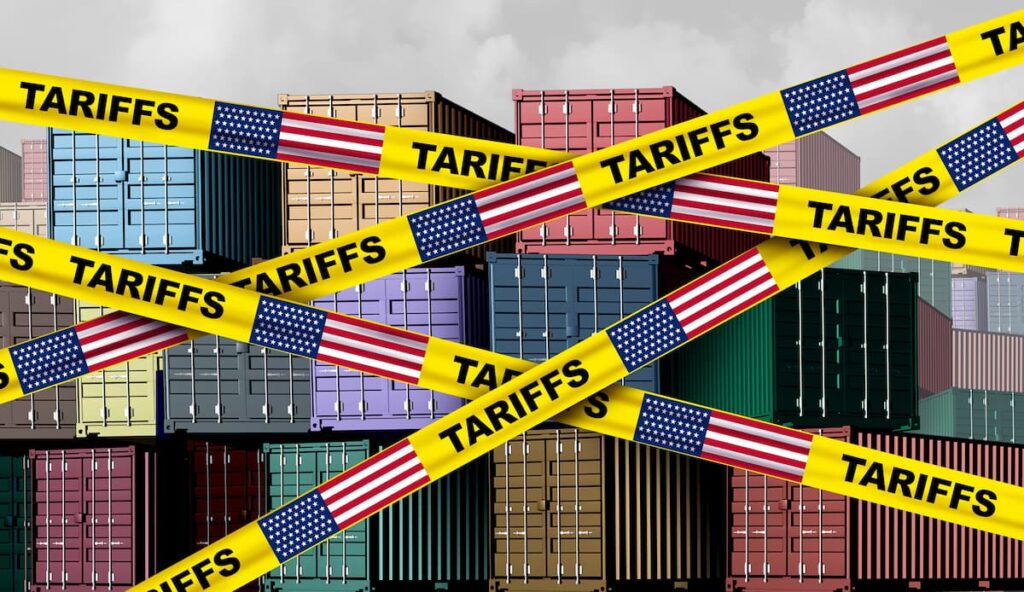As economic anxiety mounts, the White House is accelerating efforts to secure new trade agreements, hoping to offset growing public concern over rising prices and a slowing economy.
President Donald Trump marked his 100th day in office by touting a new “golden age” for American manufacturing, attributed to his aggressive tariff policies. However, on the very next day, he acknowledged the challenges ahead, warning that Americans might face higher prices for everyday goods, including children’s toys, as a direct consequence of the tariffs on Chinese imports.
Facing the task of balancing optimism with realism, Trump has adapted his messaging depending on the audience. At a rally in Michigan, he portrayed tariffs as the catalyst for economic resurgence. In contrast, during a Cabinet meeting, he candidly discussed the potential impact on consumers, suggesting that Americans might need to adjust their spending habits during this “transition period.”
Pressure Behind the Scenes
According to White House insiders, there is increasing urgency among senior officials to finalize trade agreements that could provide a much-needed boost to the economy. Treasury Secretary Scott Bessent and Commerce Secretary Howard Lutnick have publicly stated that the administration is close to sealing deals with countries such as Japan, South Korea, and India.
Talks with India have been particularly intensive, with negotiators from Prime Minister Narendra Modi’s government offering concessions to avoid a 26% reciprocal tariff. One source close to the discussions described the administration’s messaging as “strategic,” noting that while optimism is emphasized publicly, officials are aware that they need to make significant progress to reassure the American public.
Republican lawmakers are also urging quick action. Senator Thom Tillis of North Carolina acknowledged the worrying signs following a negative GDP report and emphasized the potential inflationary effects of the tariffs. “There’s a lot of reasons why President Trump’s right to hold them accountable,” Tillis said, “but we’re going to have headwinds.”
Public Acknowledgment of Economic Risks
In a rare move, Trump openly recognized that his ongoing trade war with China could directly impact American households. Speaking to reporters, he used the example of children’s toys to illustrate potential price increases, even as business leaders warn of broader supply chain disruptions.
Despite growing concerns from the business community, White House officials remain publicly optimistic, arguing that newly announced trade deals will eventually turn the economic tide. Additionally, attention is shifting toward Trump’s tax agenda, with officials aiming to finalize a package by early July to make the 2017 tax cuts permanent.
“This was always intended as a mid- to long-term strategy,” a senior White House official told CNN. “Creating fairer global trade practices was never going to happen overnight.”
Mounting Pressure to Deliver
Still, the pressure is building. Inside the administration, there is recognition that the public’s patience could wear thin if tangible improvements are not soon visible. Trump has urged Americans to be patient, yet he has not specified how long the adjustment period could last.
In town halls and meetings with business leaders, Trump continues to shift blame onto former President Joe Biden, repeatedly framing the current economic conditions as a legacy of his predecessor’s policies. “This is Biden’s economy,” Trump told a group of CEOs at the White House.
However, not all supporters are convinced. Dave Portnoy, founder of Barstool Sports and a vocal Trump backer, expressed skepticism on social media, writing: “The stock market is a direct reflection of Trump’s first 100 days in office. Doesn’t mean it won’t get better, but this is his market, not Biden’s.”
Despite such criticisms, Trump’s Cabinet members have stayed firmly on message. Interior Secretary Doug Burgum and Secretary of State Marco Rubio echoed the narrative that the economic challenges were inherited from the Biden administration, reassuring the president as he pushes forward with his economic agenda.
Looking Ahead
With the first 100 days behind him, Trump faces mounting pressure to deliver results. While the administration remains committed to its tariff strategy and broader economic reforms, officials acknowledge that meaningful progress — particularly through new trade deals — is urgently needed to bolster public confidence and stabilize the economy.
The coming weeks are expected to be critical as the White House races to finalize agreements and solidify Trump’s vision of an American manufacturing revival, even as everyday Americans brace for rising costs and economic uncertainty.



